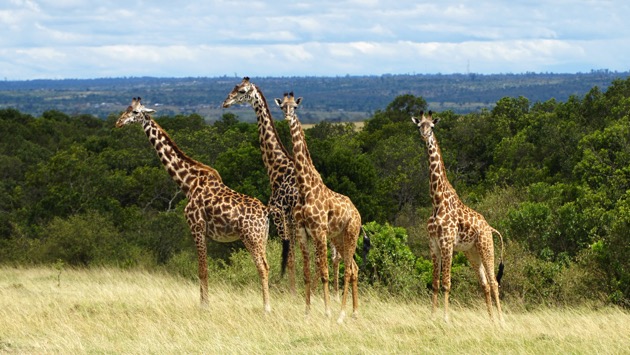Animal conservation groups to sue federal government over dwindling giraffe population
erenmotion/iStockBy JULIA JACOBO, ABC News
(WASHINGTON) — Multiple animal conservation and protection groups plan to file a lawsuit against the federal government over what they say is a failure to consider protections for giraffes under the Endangered Species Act.
The Humane Society of the United States, the Center for Biological Diversity and other animal welfare groups filed a notice of intent to sue the U.S. Fish and Wildlife Service on Wednesday.
The groups petitioned for giraffe protections in 2017, and the USFWS determined last year that giraffes may qualify for protections under the Endangered Species Act after a separate lawsuit was filed, according to the Humane Society.
However, the agency has failed to make a decision or implement any protective measures, Humane Society officials say.
Worldwide, fewer than 69,000 adult giraffes are currently living in the wild, according to the International Union for Conservation of Nature’s Red List, which classifies giraffes as vulnerable. Two giraffe subspecies are listed as “endangered” and another two were listed as “critically endangered” in 2018.
Their populations have dropped nearly 40% due to habitat loss, civil unrest and poaching, as well as international trade in bone carvings, skins and trophies, according to the Humane Society.
On average, the U.S. imports more than one giraffe hunting trophy a day, and imported more than 21,400 giraffe bone carvings between 2006 to 2015. The giraffe parts are often made into pillows, boots, bible covers and jackets, according to the Humane Society.
The U.S. has an “important role to play” in preventing giraffes from becoming extinct, Adam Peyman, wildlife programs director for Humane Society International, said in a statement.
The USFWS has the ability to stop American trophy hunters from accelerating the loss of the animal, Kitty Block, CEO and president of the Humane Society of the United States, wrote on her blog Wednesday.
“Today, we are warning the USFWS that unless it acts swiftly to protect our planet’s tallest land mammal, we will see it in court,” Block wrote. “We are putting the agency on notice today that we won’t stop hammering on this issue until it stops pandering to special interest lobbies at such great cost to the world’s wildlife.”
The Endangered Species Act, passed in 1973, protects and recovers imperiled species and the ecosystems on which they depend.
Last year, the Trump administration announced changes to how the government handles endangered species, altering the requirements for how the government decides to add or remove species from the list of endangered animals that are regulated by the government, including limiting how much habitat can be protected.
The changes would require separate plans for protecting any new species listed as threatened instead of granting them the same protections as those listed as endangered, a move that advocates say could make it more difficult to protect species that are threatened by human activity and climate change.
“Giraffes are loved by people around the world, so it’s shocking and sad that the U.S. government is ignoring their tragic plight,” Tanya Sanerib, international legal director at the Center for Biological Diversity, said in a statement. “As giraffe populations plummet, these extraordinary creatures desperately need the Endangered Species Act’s sturdy shield. But three years after we petitioned for protections, federal officials are still stalling on safeguards for everyone’s favorite longnecked mammal.”
Copyright © 2020, ABC Audio. All rights reserved.

